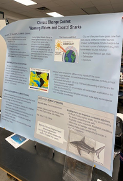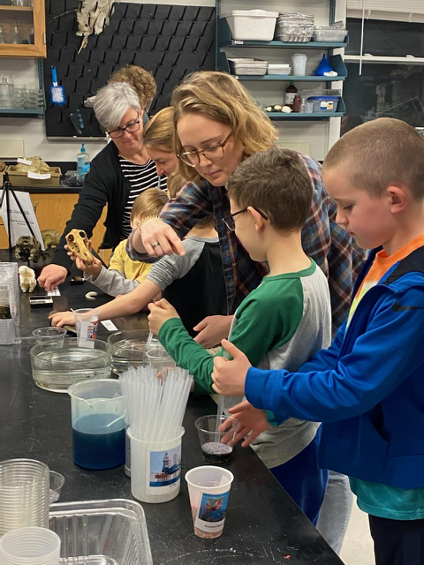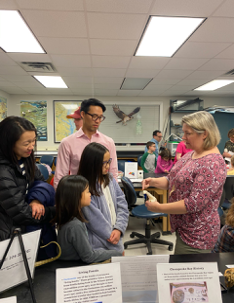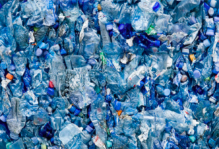The Climate Corner of the VIMS Discovery Lab
By Mary Kasputis ’21 and Jen Dunn ’20
This year, we had the opportunity to work with the Chesapeake Bay National Estuarine Research Reserve (CBNERR) through William & Mary’s Virginia Institute of Marine Science (VIMS) as assistants for the monthly Discovery Labs! The Discovery Labs at the VIMS campus are a community outreach program that provides a night of free, hands-on education appropriate for all ages, with a different topic and speaker each month. This year, we worked on four labs for January through April, which were respectively on sharks, fossils, mollusks, and coastlines. For the first three labs, we were specifically in charge of the Climate Corner section, which entailed one scientific poster geared towards slightly older audiences and one activity geared towards the younger children. For the April lab, we were supposed to be tasked with creating the entire lab, however with the lab moving online this became a much more collaborative effort with our advisors, Sarah Nuss and Tara Rudo, working with us to compile resources and short lesson plans that students and their families could complete at home. This was disheartening, as we were both excited to plan a full Discovery Lab about our coastlines and how important they are to marine science and climate studies, but we adapted as we needed to.

January: Kasputis using play dough sharks to discuss the impacts of climate change on the East Coast
One of the most exciting parts of working on the Climate Corner was coming up with activities that would engage the students, teach them about climate change and how it is meaningful in the context of the lab’s monthly theme, and make the activity relevant for multiple ages. Both of us are marine science minors and are entering the William & Mary School of Education next year, so this activity planning and execution was something that combined both of these skills we had and allowed us to be creative. For example, some of the materials used for our shark lab were thermochromic play dough, sprinkles, a hot plate, a giant map of the US East Coast, and popsicle sticks. For our fossils lab, we used two colors of sand, baby oil, straws, and three different containers for water, among other things. We had a lot of fun with it, and it looked like the kids enjoyed it as well.
Another awesome opportunity the Discovery Labs, and specifically the Climate Corner, presented us with was framing climate change issues in a variety of ways in order to communicate as effectively as possible. When we first met with Sarah, we went over not only our roles and responsibilities, but how to best translate our roles for our audience. We were given information about how to talk about climate change, which is an invaluable tool that we will both carry with us away from the Discovery Labs. A key element of our Climate Corner is that it always has relevant data. Even when we talked about shark migrations in Florida, we mention that this is only one example of a food web being disrupted by climate change and asked the kids to think of examples that they might see in Virginia waters. Additionally, we learned about how to frame these issues using values to make climate change something that people care about. For example, thinking about how fossil fuels are so closely related to the fossils that many of the kids were interested in learning about was a shock on an individualistic level, but telling the kids about how food webs were going to change and how our seafood industry might be affected was a value framed on a collective level, which seemed to resonate.
Talking with primarily children about climate change was an interesting perspective and a huge learning experience for us. Trying to take the vast system of climate change and compact it into a short lesson that would keep the attention of a young child, while also being understood by that child, was a challenge. It helped us to think critically about what we wanted to emphasize with climate change and how we wanted to convey our messages – and we did not always get the message across. Sometimes, the kids were simply not going to pay attention to us over the play dough and straws. But that was alright. At the end of the day, so many of these kids will be exposed to countless messages about climate change, it may very well end up being overwhelming and borderline dystopian as they continue to get older and classrooms can no longer avoid the topic. We can only hope that their information will be as well-framed, accurate, and optimistic, as we strived to be. The Discovery Labs were eye opening in a lot of ways for us, and such a valuable experience. We hope the same can be said for the families who came to our Climate Corner. And, we hope they had as much fun as we did!





No comments.
Comments are currently closed. Comments are closed on all posts older than one year, and for those in our archive.